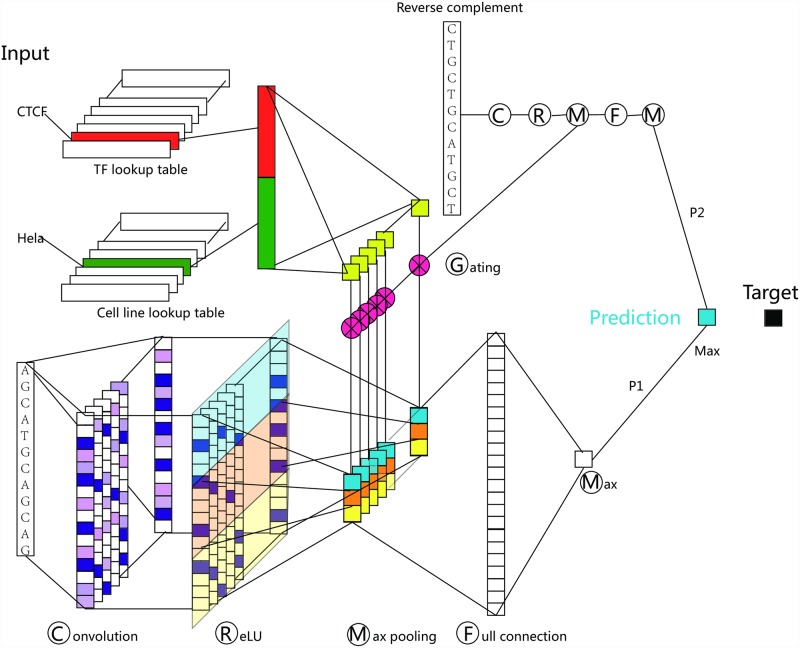Fig 1. The TFImpute model.
Each input is a TF-cell-sequence triple. In the convolution layer, each filter (motif) corresponds to a column. Each filter scans the input sequence and produces one value at each stop. For each filter, the max-pooling layer partitions the signal into three windows and takes the maximum value in each window to obtain three values. The same gate signal operates on the three values, and the gate signal is different for different filters. For each input, the reverse complement of the input sequence together with the TF and cell line is constructed and used as another input for the same network. Therefore, for each input, we obtained two values for forward and reverse strand of the sequence: P1 and P2. The maximum of P1 and P2 is taken as the final prediction. During training, the prediction was compared with the target, and the error was back-propagated to learn the parameters of the whole network.

